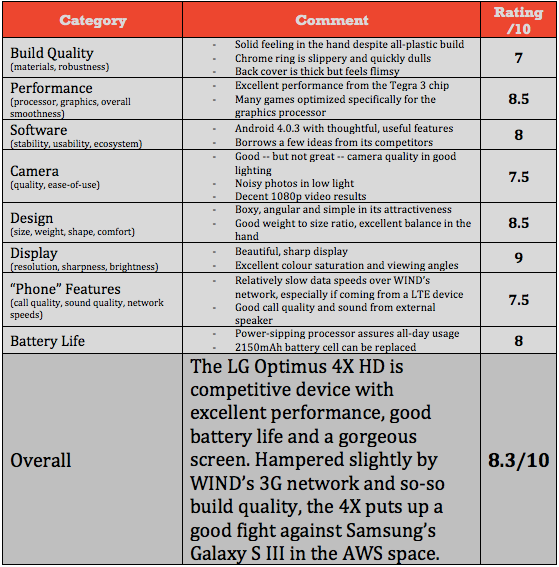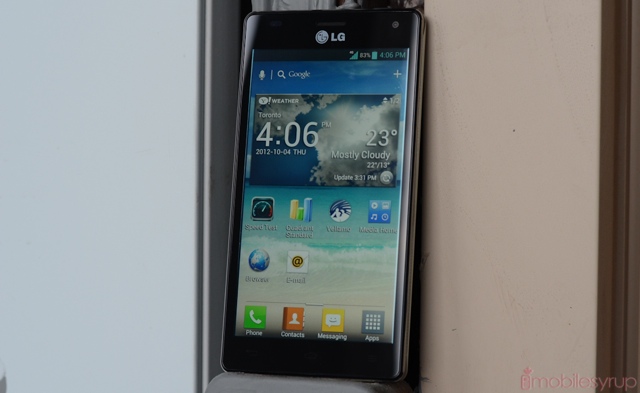
LG’s taken a rather convoluted route to arrive at the high-end smartphone market. A company famed, at one time, more for its design than its quality, LG found tremendous success with its Optimus One series, and has slowly been releasing quality hardware to compete directly with Samsung.
The latest in that line is a spiritual successor to the Optimus 2X, aptly titled the Optimus 4X HD. Upgrading nearly every aspect of the device, including the processor, screen and operating system, LG has joined its Optimus UI with Android 4.0, a high-quality IPS display and a screaming Tegra 3 processor. The device goes up against the Galaxy S III on WIND Mobile’s growing 3G network. Can it dethrone the king in the land of budget carriers? Read on to find out.
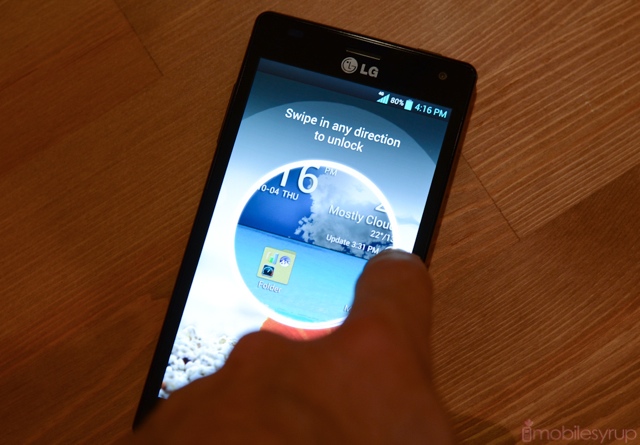
Specs:
– Android 4.0.3 with Optimus UI (QuickMemo)
– 4.7-inch 720×1280 pixel True IPS HD display
– 1.5Ghz quad-core Tegra 3 SoC
– 1GB RAM
– 16GB internal storage (with microSD slot)
– 8MP backside-illuminated camera, 1.3MP front camera
– 2100mAh battery (removable)
– WiFi (b/g/n), Bluetooth 4.0, A-GPS, NFC
– HSDPA 21 Mbps; HSUPA 5.76 Mbps
– 132.4 x 68.1 x 8.9 mm
– 133g
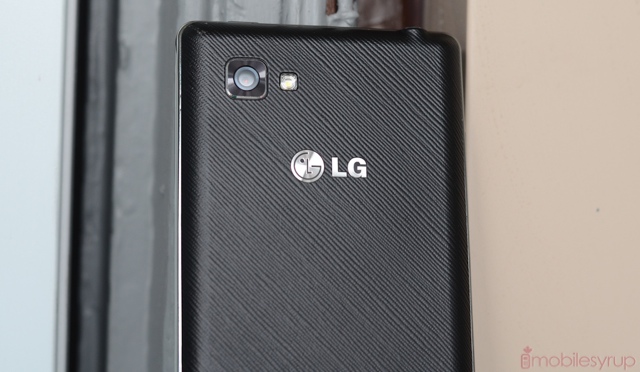
Design & Display
The LG Optimus 4X HD feels heftier than its 133 grams. LG has opted for high-quality plastics with a meaty textured back cover and a prism bezel circling the entire device. At first I found the design language to be a bit chintzy, harkening back to the days of LG’s Prada line, but after using the phone for a few days it has grown on me. The phone is also bordered by two thin chrome lines which would be more striking if they were made of metal. Instead, the plastic is slippery and attracts fingerprints, and dulls after only minor use.
There is a very minor bezel on the front of the 4X, as the 4.7-inch display makes up most of the real estate. There are three capacitive buttons below the screen which, by default, have no haptic feedback and turn off after 1.5 seconds. I changed these settings immediately and the phone immediately felt more usable. I bring this up because LG tends to make these bizarre and often maddening decisions, forcing the user to improve the device out of the box. The potential is there, but LG makes us hunt. This is largely the impression left on me by the Optimus 4X.
There’s a lot of good design here: the LCD is very close to the glass, and the picture quality is sublime. There’s a lot of science here that LG has boasted of before, but what it means is better viewing angles, stronger colour reproduction, improved outdoor viewability and excellent power efficiency. The screen on the Optimus G is better than this, but the 4.7-inch IPS display here is almost as good as the Super LCD2 of the One X, and that’s saying something.
Overall the design of the Optimus 4X is neither distinctive nor especially noteworthy — it’s a flat, black slab of plastic and glass — but that should not diminish the excellent build quality, outstanding screen and generally fine form of the device itself.
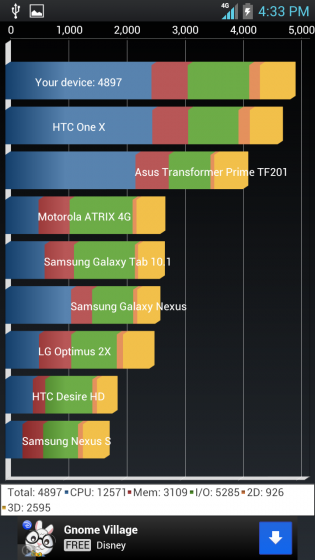
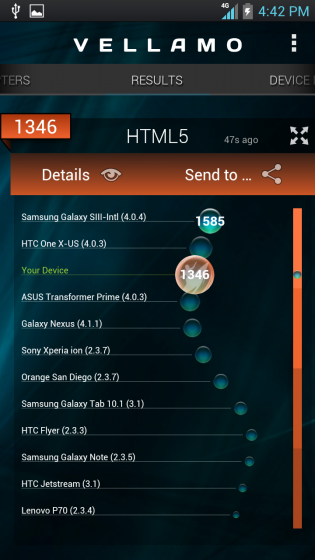
Performance & Software
The LG Optimus 4X HD is the first Tegra 3-powered smartphone I’ve used, as the Canadian carriers’ propensity for LTE handsets precluded Nvidia’s quad-core solution until recently.
But as we’ve learned with the excellent Tegra 3-powered deluge of Android tablets, Nvidia improved Android performance significantly over its troublesome, and somewhat underpowered, dual-core Tegra 2 SoC. And despite being built on what now seems an ancient 40nm manufacturing process, Tegra 3 has proven relatively power-efficient, though its HSPA+ limited baseband could be attributable.
All that said, the Optimus 4X delivered an Android 4.0.3 experience comparable to the latest Snapdragon S4 or Exynos Quad chip, which is to say that everything was effortlessly smooth. Nvidia has cultivated a gaming ecosystem in parallel to that of the Android Market. Dubbed ‘Tegra Zone’, it features Android games altered and optimized for the Tegra 3.
Not only did the 4X excel at synthetic benchmarks such as Quadrant Suite and, ironically, Qualcomm’s revamped Vellamo app, but I found its 4.7-inch IPS display a perfect complement to games such as Shadowgun.
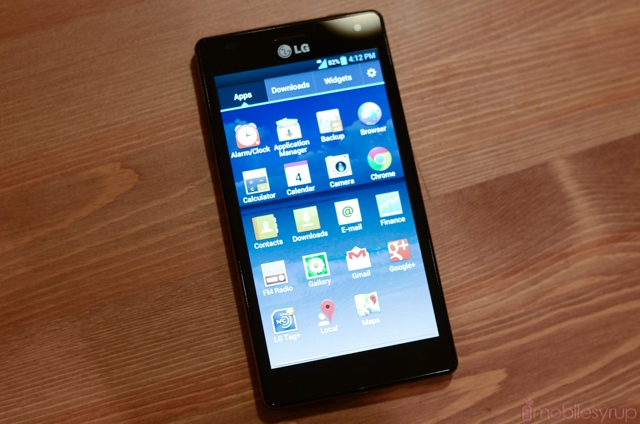
LG’s Optimus UI 3.0 resembles Samsung’s TouchWIZ UI without the gimmicks. I say that with as much fondness as I can muster for S Voice and Smart Stay, functional if undeveloped in their current forms.
But LG is not shy about “borrowing” many features made popular in TouchWIZ, though thankfully its implementation is often better than its fellow Chaebol member’s.
The highly-touted (and heavily marketed) Quick Memo, for example, is taken straight from the Galaxy Note, sans S Pen, but it works surprisingly well. For example, LG pre-installs a shortcut to the screenshot augmenter in the notification bar; once pressed, it allows annotations, drawings and crops atop of whatever app you’re in. But whether Quick Memo is a selling feature depends on your propensity for doodling.
LG’s launcher also resembles TouchWIZ, but the folder-creation workflow is, thankfully, more akin to stock Android than Samsung’s. There is support for gestures, and accelerometer-enabled icon movements, plus a number of other ICS-related amenities, such as swiping away individual notifications.

LG’s slightly modified stock apps, such as email, calendar, messages, contacts, are reminiscent of Google’s stock Android experience adorned with flecks of neon.
A couple things to note: LG didn’t entirely ruin the Android typing experience, though vexingly it disables predictive typing by default. And, in addition to LG’s stock browser, Google Chrome is also pre-installedon the 4X. And while there are a bunch of LG-related apps on the device – notably RemoteCall, SmartShare, SmartWorld and other double-capitalized add-ons – there is nothing resembling WIND bloatware to speed of.
There is nothing particular noteworthy about the software on the 4X, but LG is learning that less is more. Hopefully LG and WIND will be more committed to keeping the 4X updated than it was with the Optimus 2X. That device, which launched on Android 2.2. Froyo, took nearly a year to earn Gingerbread, and was promptly obsoleted thereafter. With rumours of LG producing the upcoming Nexus device, perhaps Google could light a bit of a fire underneath them.

Camera
The 4X boasts an 8MP back camera module and a 1.3MP front camera. Like many mid- to high-end Android devices, the phone takes competent if noisy photos in good lighting conditions.
Considering LG is touting its upcoming Optimus G as having one of the best smartphone cameras on the market, it’s interesting to see the makings of a good camera experience on the 4X.
LG’s camera app has been significantly improved since the 2X, and takes photos almost instantly. There are options to set exposure, white balance, and other standard smartphone camera settings and LG has smartly included its own panorama, HDR and “Continuous Shot” solutions. The latter takes six (rather blurry) shots in a row, while HDR combines shots at multiple exposures to fashion a single photo with improved dynamic range. These features are not only useful but implemented with austere confidence; LG obviously has faith that its future devices will match in photo quality the potential of its software.
Furthermore, LG has integrated gimmicky features like an audio shutter (“Cheese!”) and live video morphing (big eyes, small mouth) and live background (disco, “In Space”). In other words, the kitchen sink. Then there’s Time Catch Shot which, like the much talked-about BlackBerry 10 feature, buffers several images before the shutter is pressed, allowing you to go back in time and, hopefully, capture your family without mom’s eyes closed. In the real world, most of the shots I took using Time Catch were blurry and unusable, but your mileage may vary.
Low-light captures were dark, with softly-defined detail. So too was the 1080p video slightly underwhelming, with poor audio capture and a tendency for softness and dull colour.
There’s a lot to like about LG’s camera implementation – you can, like TouchWIZ, activate it from among four shortcuts on the lock screen – but the quality is just good enough to recall the inherent limitations of camera sensors of this size.

Battery Life
Throughout my time using the Optimus 4X, I was struck by how little I worried about the battery life. Likely because the phone is limited to WIND’s HSPA+ network, the Tegra 3 baseband was not significantly taxed.
In real world usage, therefore, I was easily able to make it through the day with the Optimus 4X HD. LG claims that its True IPS HD bests the efficiency of equivalent LCD displays, and I have no reason to believe otherwise. Average battery life was between eight and 12 hours, depending on signal strength and usage habits.
Something to take into account when purchasing a device like the Optimus 4X HD on WIND’s network is your proximity to a cell tower. As with all smartphones, having a stronger signal from one tower means less searching and fewer changeovers; the harder a phone’s baseband has to work to maintain a signal, the faster the battery drains. If you are located in a major city like Toronto, you’re unlikely to struggle to find a decent signal. In WIND’s nascent locations, smaller cities such as Kitchener and Guelph, a strong signal is less assured.
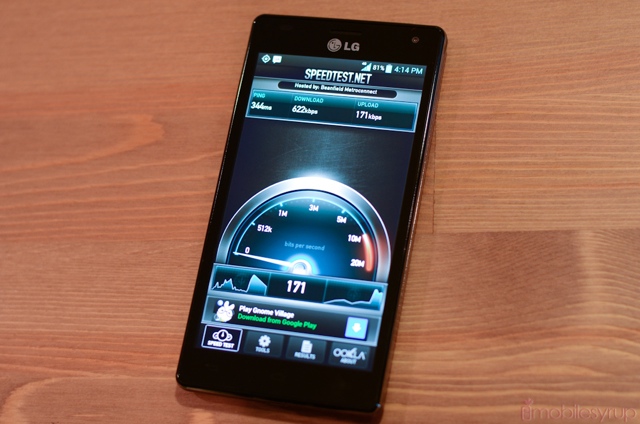
Network Speed, Call Quality and Miscellaneous
Here’s where things get tricky. WIND has billed itself as a premium discount brand; national service, provided you’re in a big city; fast data speeds, provided you’ve never used LTE; premium devices, as long as you’re fine with Android.
WIND’s network is still growing, but after the proliferation of incumbent LTE networks, using the Optimus 4X on a 3G network seemed like a significant downgrade. It would be one thing if WIND could match the 3G speeds of Rogers, TELUS and Bell, but it can’t; I averaged just over 2Mbps down and under 1Mbps up when using the device in downtown Toronto.
To be honest, the Optimus 4X is competitive with every other high-end Android device on the market except in network speed. Signal quality is also another issue; due to the inherent disadvantage of not having a lower-spectrum frequency to work with, AWS devices on WIND’s network cannot obtain the same signal quality behind thick walls or in basements as their PCS equivalents.
Outside of a WIND Home area, the Optimus 4X falls back to the Rogers 2G EDGE network, which accrues hefty per-minute costs and painfully slow data speeds.
Call quality over WIND’s network was very good. I had no trouble connecting to both cell- and landlines with full sound on both ends.
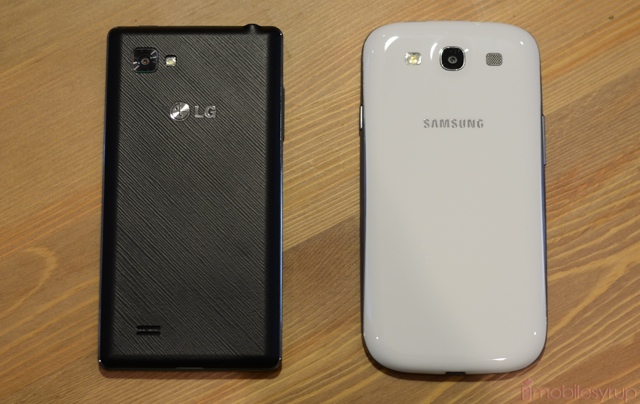
Conclusions
The LG Optimus 4X is a truly great “good” device. It hits all the right notes, and performs as well as the AWS Galaxy S III in both synthetic benchmarks and real-world performance.
Hampered by the inherent limitations of WIND’s growing 3G network, the phone combines excellent gaming performance, a thoughtful Android UI, good battery life, decent ergonomics and a gorgeous IPS display.
